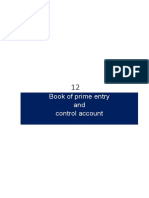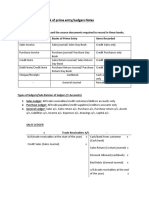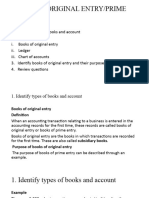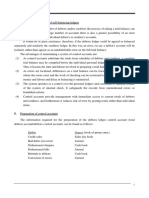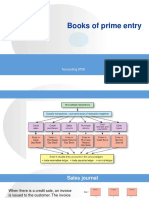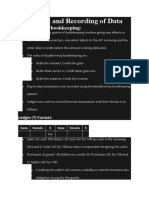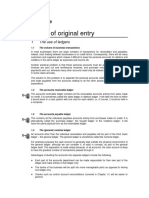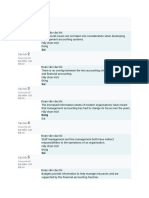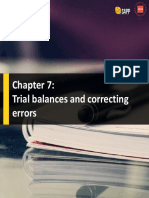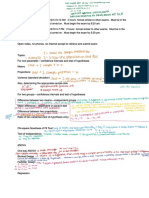0% found this document useful (0 votes)
67 views19 pagesAccounting Daybooks & Journal Guide
1. The purchases daybook and sales daybook record invoices before they are posted to supplier/customer accounts. They are books of prime entry but not double entry.
2. The totals from the daybooks are posted to control accounts to track total payables and receivables.
3. The individual lines are posted to supplier/customer ledger accounts. The control accounts must reconcile with the total of individual ledger account balances.
Uploaded by
Thùy Vân NguyễnCopyright
© © All Rights Reserved
We take content rights seriously. If you suspect this is your content, claim it here.
Available Formats
Download as PDF, TXT or read online on Scribd
0% found this document useful (0 votes)
67 views19 pagesAccounting Daybooks & Journal Guide
1. The purchases daybook and sales daybook record invoices before they are posted to supplier/customer accounts. They are books of prime entry but not double entry.
2. The totals from the daybooks are posted to control accounts to track total payables and receivables.
3. The individual lines are posted to supplier/customer ledger accounts. The control accounts must reconcile with the total of individual ledger account balances.
Uploaded by
Thùy Vân NguyễnCopyright
© © All Rights Reserved
We take content rights seriously. If you suspect this is your content, claim it here.
Available Formats
Download as PDF, TXT or read online on Scribd
/ 19


















